What traceability really means, where different markets stand today, and why it's becoming a strategic imperative
The discovery was shocking: what appeared to be legitimate cancer medications contained no active ingredients whatsoever. In 2012, counterfeit versions of Avastin—a life-saving cancer treatment—were distributed to medical practices across the United States, leaving patients to unknowingly receive ineffective treatments during critical treatment windows. The FDA ultimately sent warning letters to nearly 1,000 medical practices across 48 states as more counterfeit batches were uncovered.
This wasn't an isolated incident. The World Health Organization estimates that 10% of medicines in low- and middle-income countries are substandard or falsified, contributing to hundreds of thousands of deaths annually. The global counterfeit medicines market is worth an estimated $200-432 billion per year, making it one of the largest illicit markets worldwide.
Yet despite this staggering crisis, pharmaceutical traceability—the ability to track and trace medicines throughout the supply chain—remains poorly understood, inconsistently implemented, and often viewed through the narrow lens of regulatory compliance.
After years of implementing traceability solutions across multinational pharmaceutical companies, we've observed a fundamental disconnect: most executives think traceability is about scanning barcodes and meeting regulatory requirements. This narrow view is not only limiting the industry's response to counterfeiting but also missing massive opportunities for operational excellence and competitive advantage.
Ask ten pharmaceutical executives to define traceability, and you'll likely get ten different answers. Some will mention barcodes, others will talk about serialization, and many will immediately jump to regulatory compliance. This confusion reveals how poorly the industry understands what traceability actually encompasses.
Traceability fundamentally consists of two components:
Tracking: Knowing where a product is right now—in which warehouse, at which pharmacy, with which patient.
Tracing: Understanding a product's complete history—where it's been, who handled it, how it moved through the supply chain.
But complete traceability goes far beyond these basic definitions. It's the foundation for an intelligent, connected pharmaceutical ecosystem that captures not just location data, but behavioral patterns, consumption trends, market dynamics, and operational insights that were previously invisible.
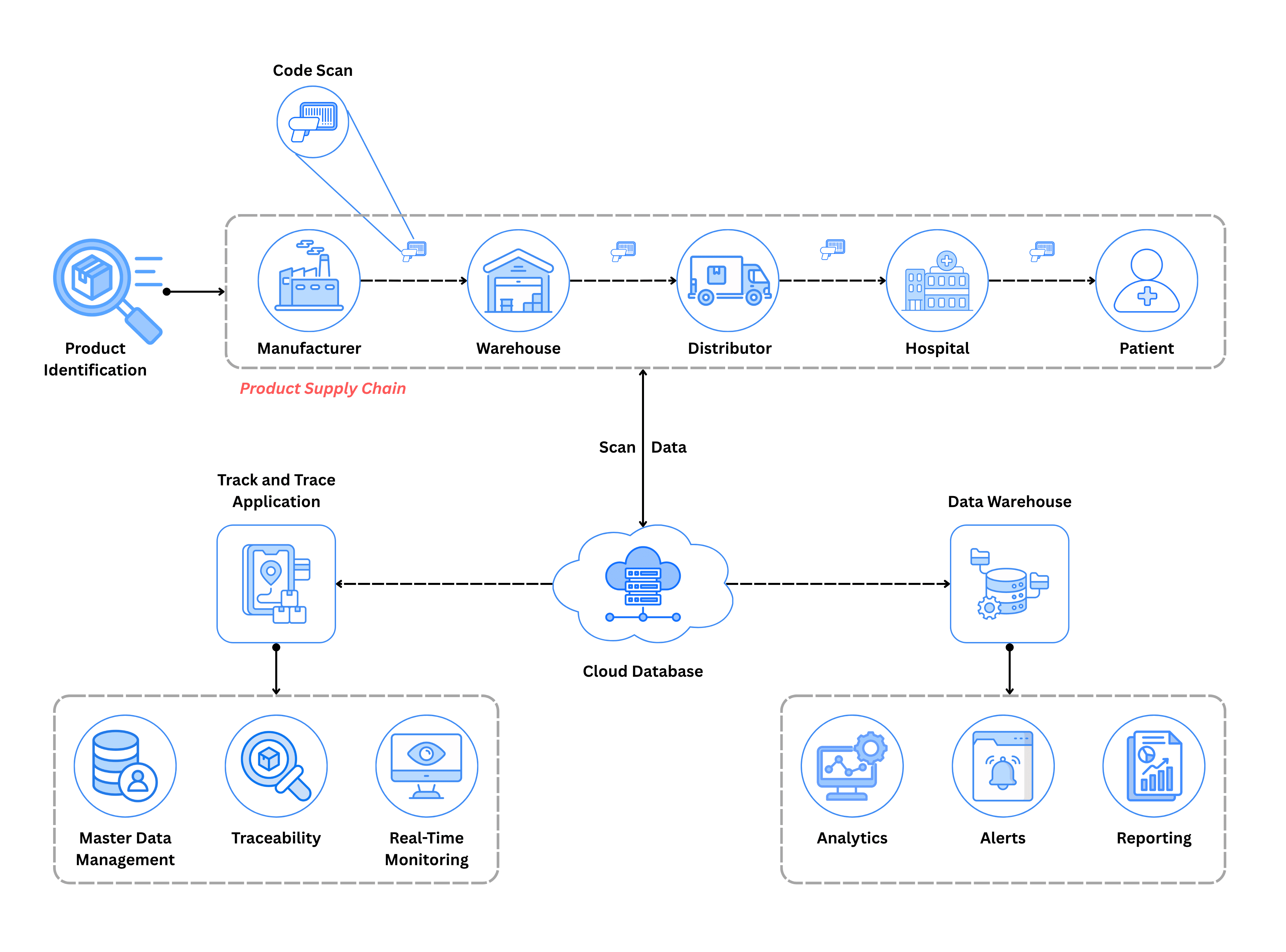
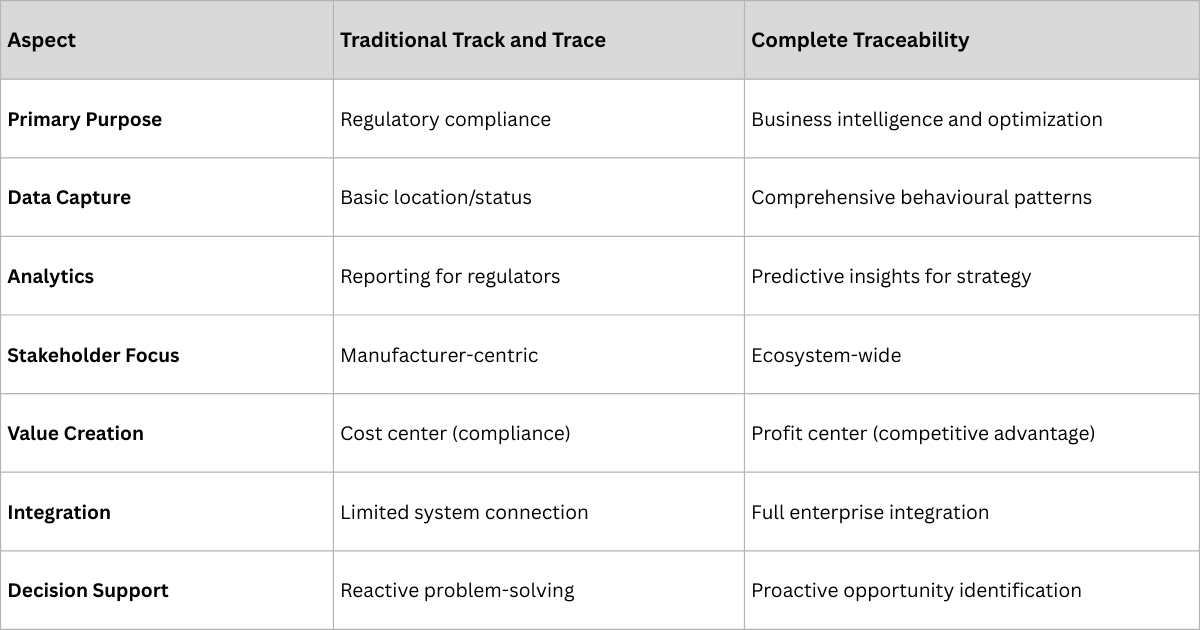
The implementation of pharmaceutical traceability varies dramatically across the globe, creating a patchwork of regulations, standards, and capabilities that reflects each region's unique challenges and priorities.
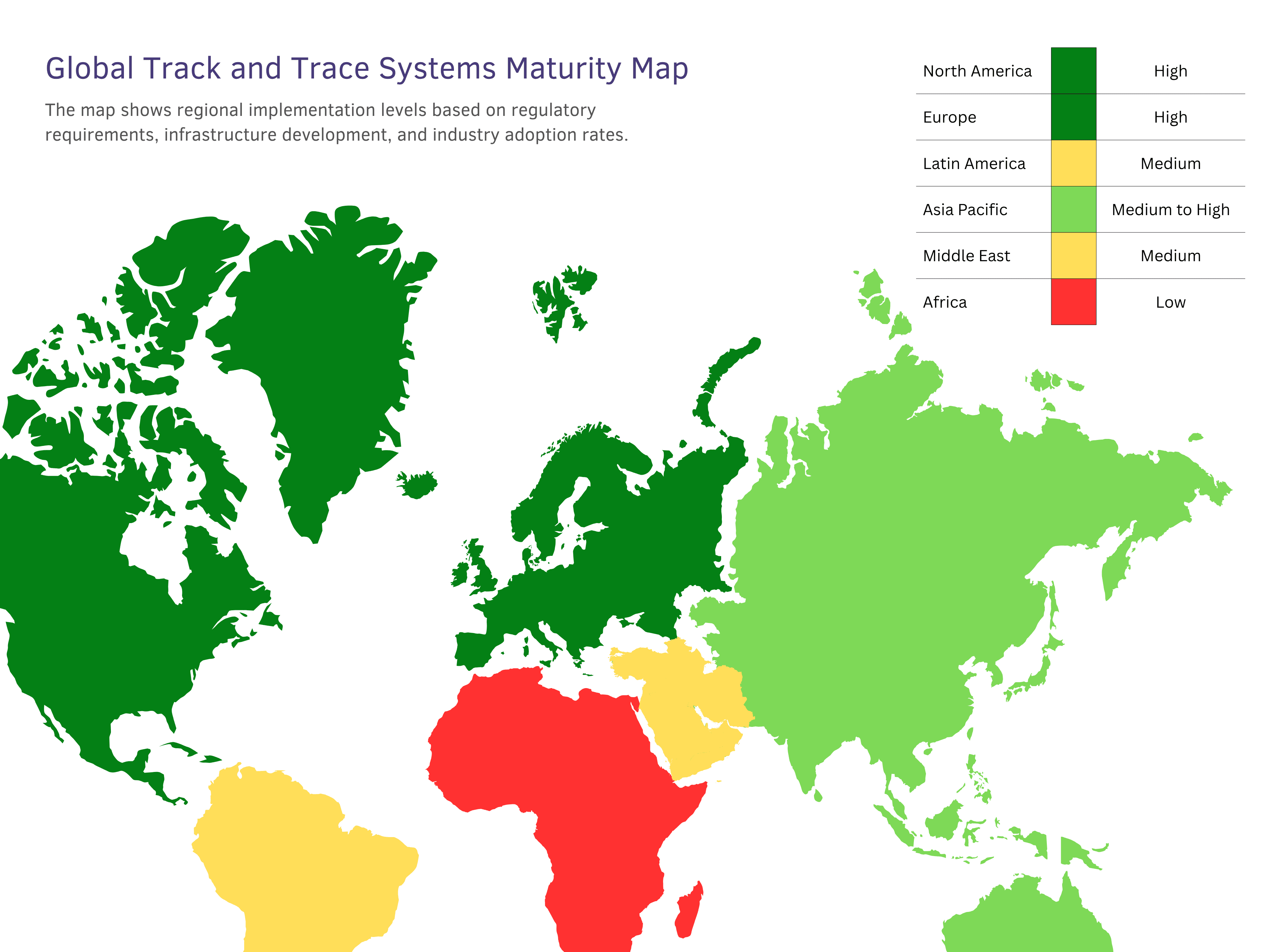
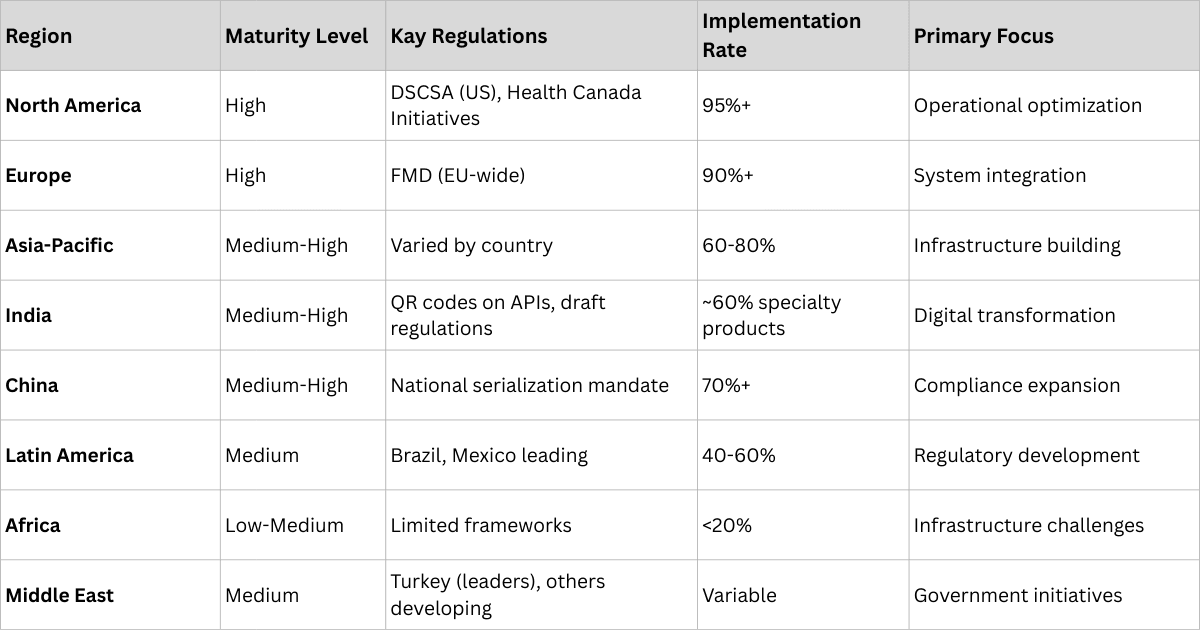
North America: The DSCSA Success Story
The United States has emerged as a global leader in pharmaceutical traceability through the Drug Supply Chain Security Act (DSCSA), enacted in 2013 with full implementation achieved by November 2023. The DSCSA requires:
- Standardized product identifiers using GS1 standards
- Electronic data interchange throughout the supply chain
- Verification capabilities at every level
- Complete serialization for prescription medicines
This comprehensive approach has created one of the world's most robust pharmaceutical traceability systems, though adoption quality varies significantly among smaller distributors and pharmacies.
Europe's Falsified Medicines Directive (FMD), effective since 2017, mandates serialization and authenticity verification for prescription medicines across all EU member states. The European system emphasizes:
- Unique identifiers on every medicine package
- Anti-tampering devices to detect interference
- Centralized authentication systems
- Real-time verification at dispensing
The FMD has achieved impressive adoption rates, with over 90% of European pharmacies now connected to verification systems.
The Asia-Pacific region presents a complex landscape of varying maturity levels:
India is implementing QR codes on Active Pharmaceutical Ingredient (API) containers and has achieved approximately 60% tracking coverage for specialty products. The government's push for digital transformation has accelerated adoption, particularly among larger pharmaceutical companies.
China has implemented comprehensive serialization requirements for certain drug categories, with plans for expansion across all prescription medicines by 2025.
Japan maintains sophisticated traceability systems primarily focused on high-value and biologics products.
Latin America, Africa, and other emerging markets face the greatest counterfeiting challenges but also the most significant implementation obstacles:
Brazil and Mexico are advancing serialization requirements, though infrastructure limitations create implementation challenges.
African countries have limited traceability adoption due to infrastructure constraints, despite facing the highest rates of counterfeit medicines.
Russia operates the Chestny ZNAK system, requiring serialization for certain pharmaceutical products with plans for expansion.
Global implementation of pharmaceutical traceability relies heavily on GS1 standards, developed by GS1—a global organization that creates standards for supply chain management and ensures interoperability across different systems and geographies.
Global Trade Item Number (GTIN): Uniquely identifies products, enabling consistent tracking across all supply chain participants. GTINs are mandated by regulatory frameworks like the DSCSA.
Serial Shipping Container Code (SSCC): Identifies logistics units like pallets or cases, enabling efficient tracking of bulk shipments.
Global Location Number (GLN): Identifies specific locations such as manufacturing sites, warehouses, or pharmacies, ensuring precise tracking of product movement.
Electronic Product Code (EPC): Supports RFID-based data capture for real-time tracking and automated data collection.
These standards facilitate seamless data sharing across global supply chains. For example, a medicine manufactured in India using GTIN identification can be tracked through European distribution networks and verified at American pharmacies using the same standardized data structure.
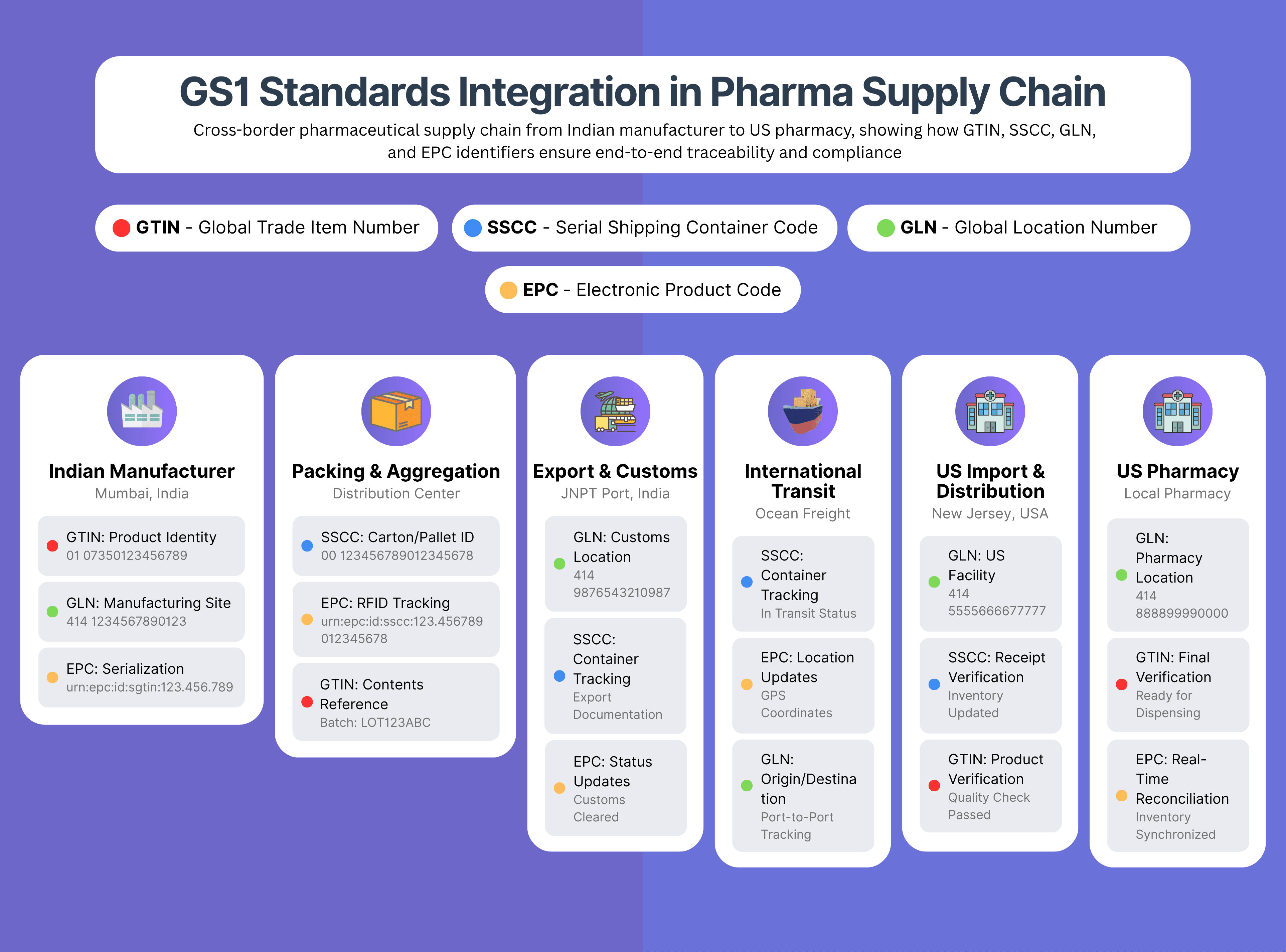
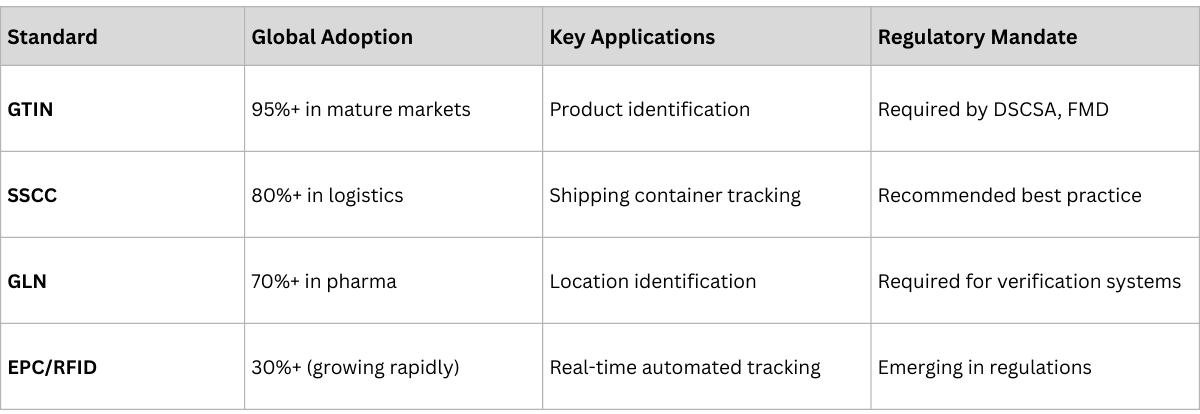
GS1's AIDC technologies, particularly 2D DataMatrix codes, have become the backbone of modern pharmaceutical traceability. These codes can include:
- Product identification numbers
- Lot/batch numbers
- Expiration dates
- Serial numbers
This information enables automated data capture throughout the supply chain, reducing manual errors and ensuring comprehensive tracking capabilities.
The scale of pharmaceutical counterfeiting has reached crisis proportions, making traceability not just a regulatory requirement but a patient safety imperative.
By the Numbers:
- $200 billion: Estimated annual value of the global counterfeit medicines market
- 10%: Percentage of medicines that are substandard or falsified in low and middle-income countries
- 1 million: Estimated annual deaths caused by counterfeit medicines
- 200+: Countries affected by pharmaceutical counterfeiting
In 2012, counterfeit Avastin (a cancer treatment) containing no active ingredients reached medical practices across the United States, putting cancer patients' lives at risk when they received ineffective treatments during critical treatment windows. The FDA ultimately identified nearly 1,000 affected medical practices across 48 states.
Recent incidents in Southeast Asia and Africa have involved counterfeit antimalarial medications containing incorrect active ingredients, leading to treatment failures and contributing to drug resistance in regions already struggling with malaria control.
These incidents highlight a sobering reality: counterfeiting isn't just an economic problem—it's a public health crisis that demands systematic solutions.
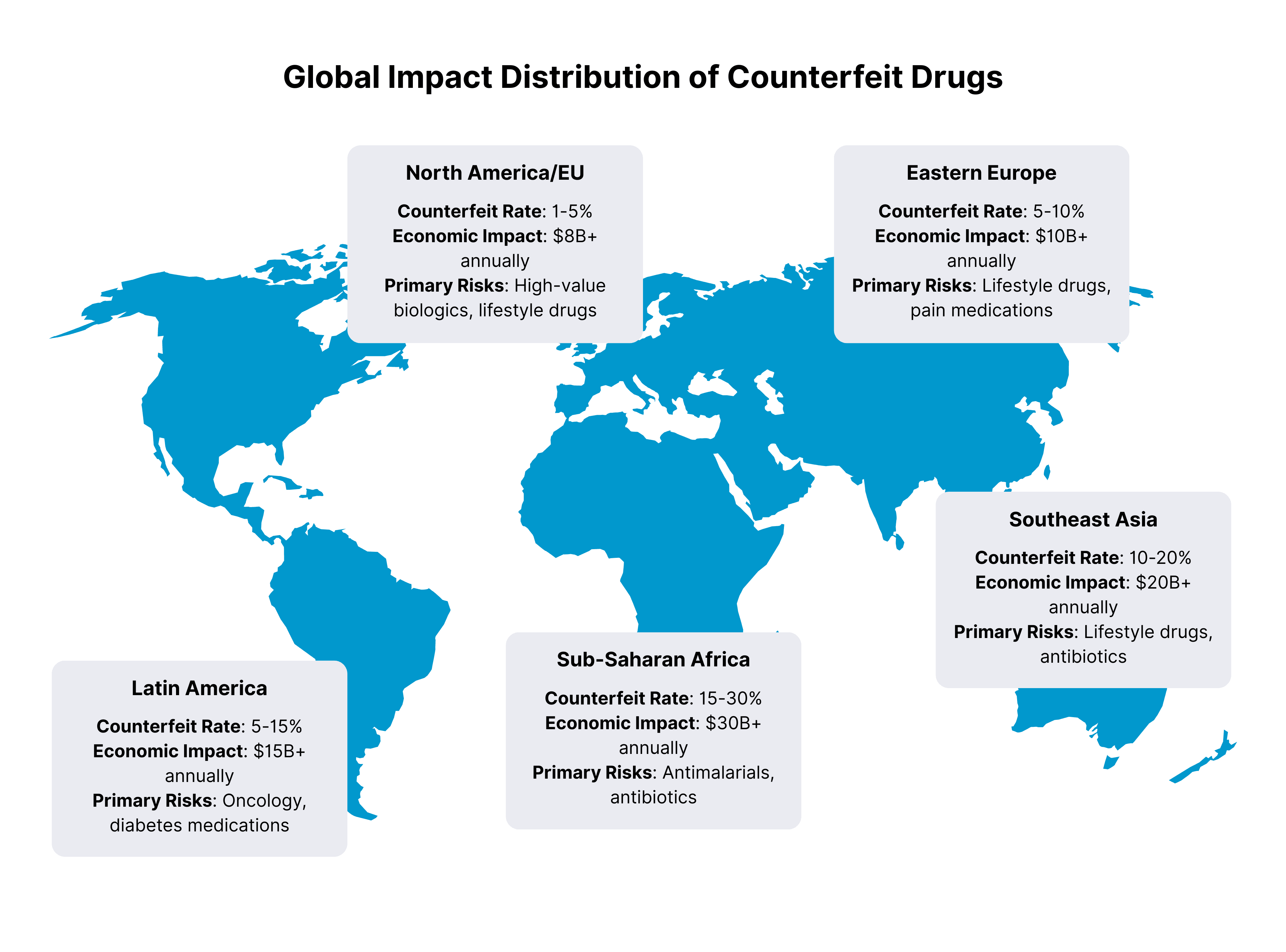
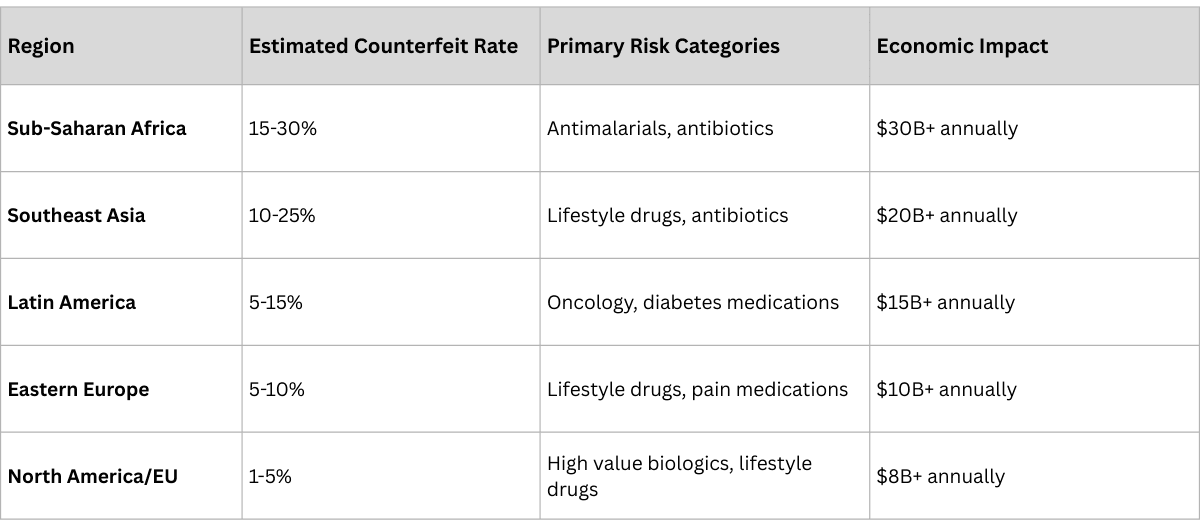
The pharmaceutical traceability market is experiencing unprecedented growth, driven by regulatory requirements, patient safety concerns, and increasing recognition of operational benefits.
- 2024: $5.19 billion global market size
- 2033: Projected $11.9 billion market size
- CAGR: 9.6% compound annual growth rate
- Regulatory mandates expanding globally
- Increasing counterfeit incidents
- Digital transformation initiatives
- Supply chain optimization demands
- Patient safety awareness
- Cloud-based platforms gaining dominance
- AI and machine learning integration increasing
- Blockchain pilots expanding beyond proof-of-concept
- IoT integration for environmental monitoring
- Mobile applications becoming standard
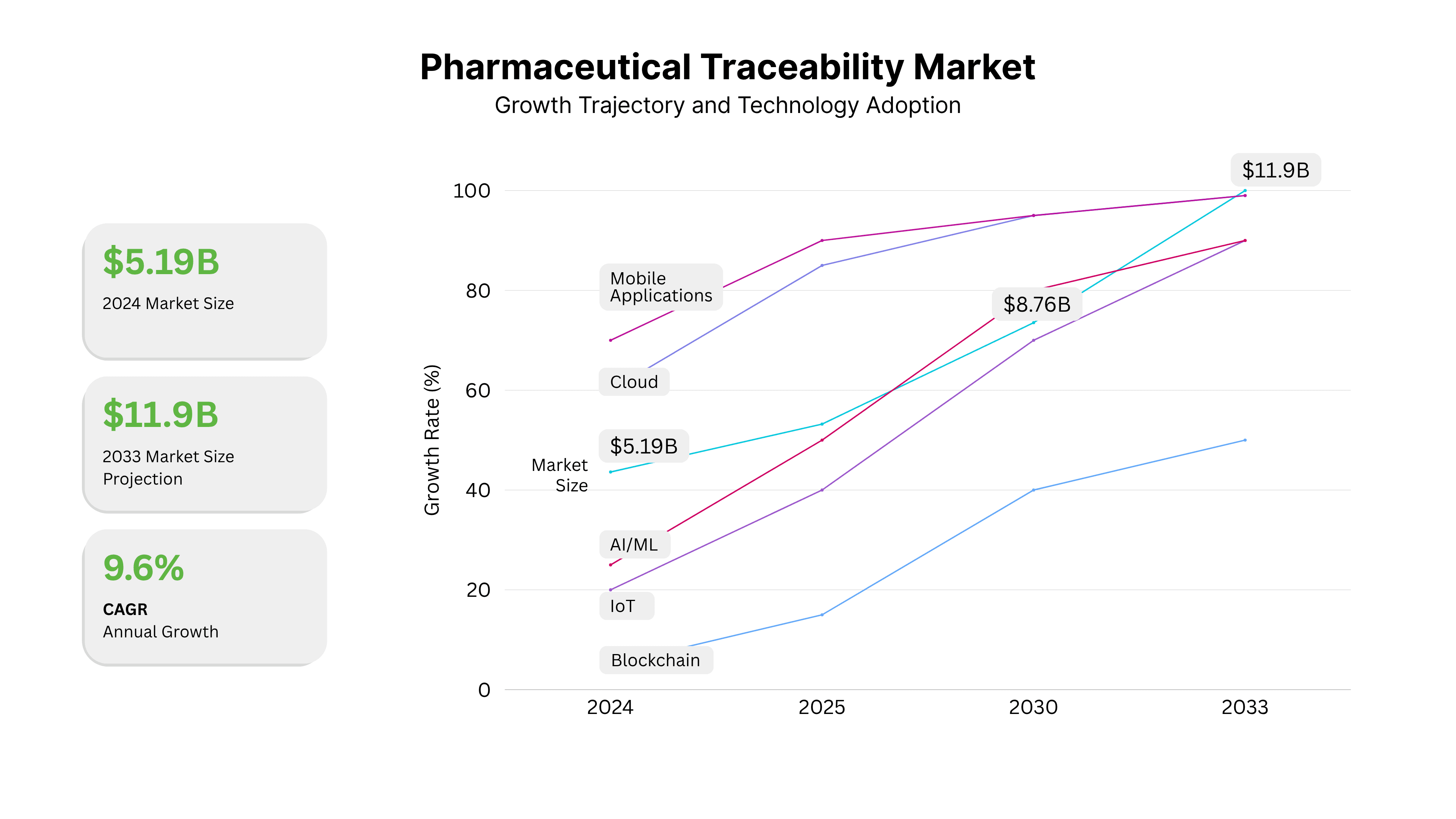
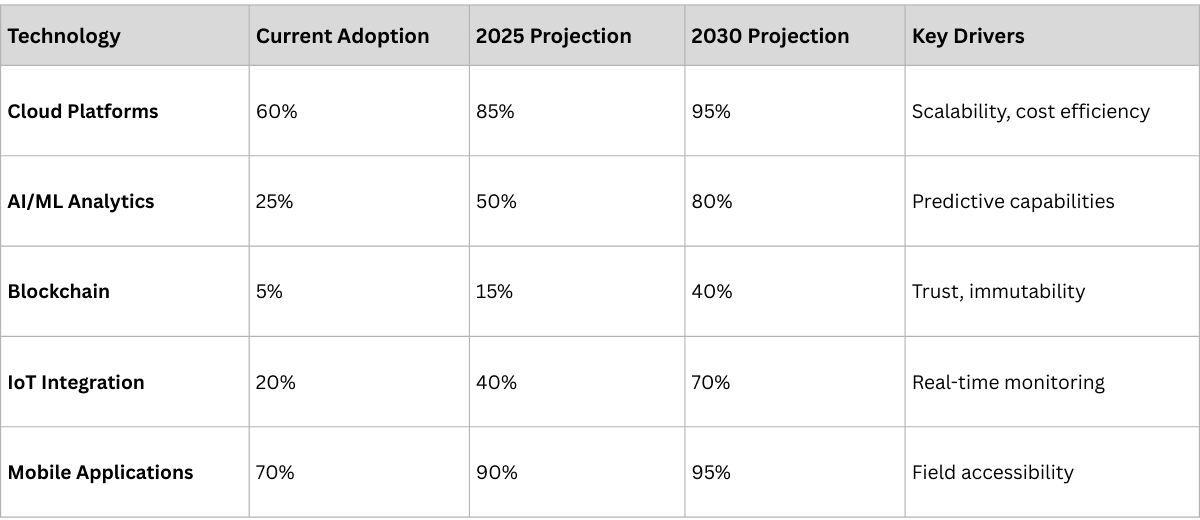
Our implementation experience across multiple markets reveals significant variations in traceability maturity:
United States and Europe have achieved comprehensive regulatory compliance and are now focusing on operational optimization and competitive advantage applications. These markets feature:
- Universal serialization implementation
- Advanced analytics adoption
- Partner ecosystem integration
- Service-based business model exploration
India, China, and Brazil are rapidly implementing comprehensive systems with strong government support. These markets show:
- Accelerating adoption rates
- Infrastructure modernization
- Significant transformation opportunities
- Growing private sector investment
Many African, Southeast Asian, and smaller Latin American countries face infrastructure challenges but demonstrate increasing awareness and government interest. Key characteristics include:
- Limited current adoption
- High counterfeiting rates creating urgency
- Leapfrog technology opportunities
- International aid and partnership initiatives
Despite clear benefits and regulatory requirements, pharmaceutical traceability implementation faces consistent challenges across all markets:
- Stakeholder Alignment: Coordinating manufacturers, distributors, pharmacies, and regulators
- Technology Integration: Connecting new traceability systems with existing ERP, MES, and other platforms
- Data Management: Handling massive volumes of real-time data while ensuring security and privacy
- Cost Considerations: Balancing implementation costs with long-term benefits
- Change Management: Training personnel and adapting operational processes
- Early Stakeholder Engagement: Including all supply chain participants in planning phases
- Phased Implementation: Starting with high-value products before full-scale deployment
- User-Friendly Technology: Ensuring systems are intuitive for field personnel
- Comprehensive Training: Providing ongoing education and support
- Clear Value Proposition: Demonstrating benefits beyond compliance
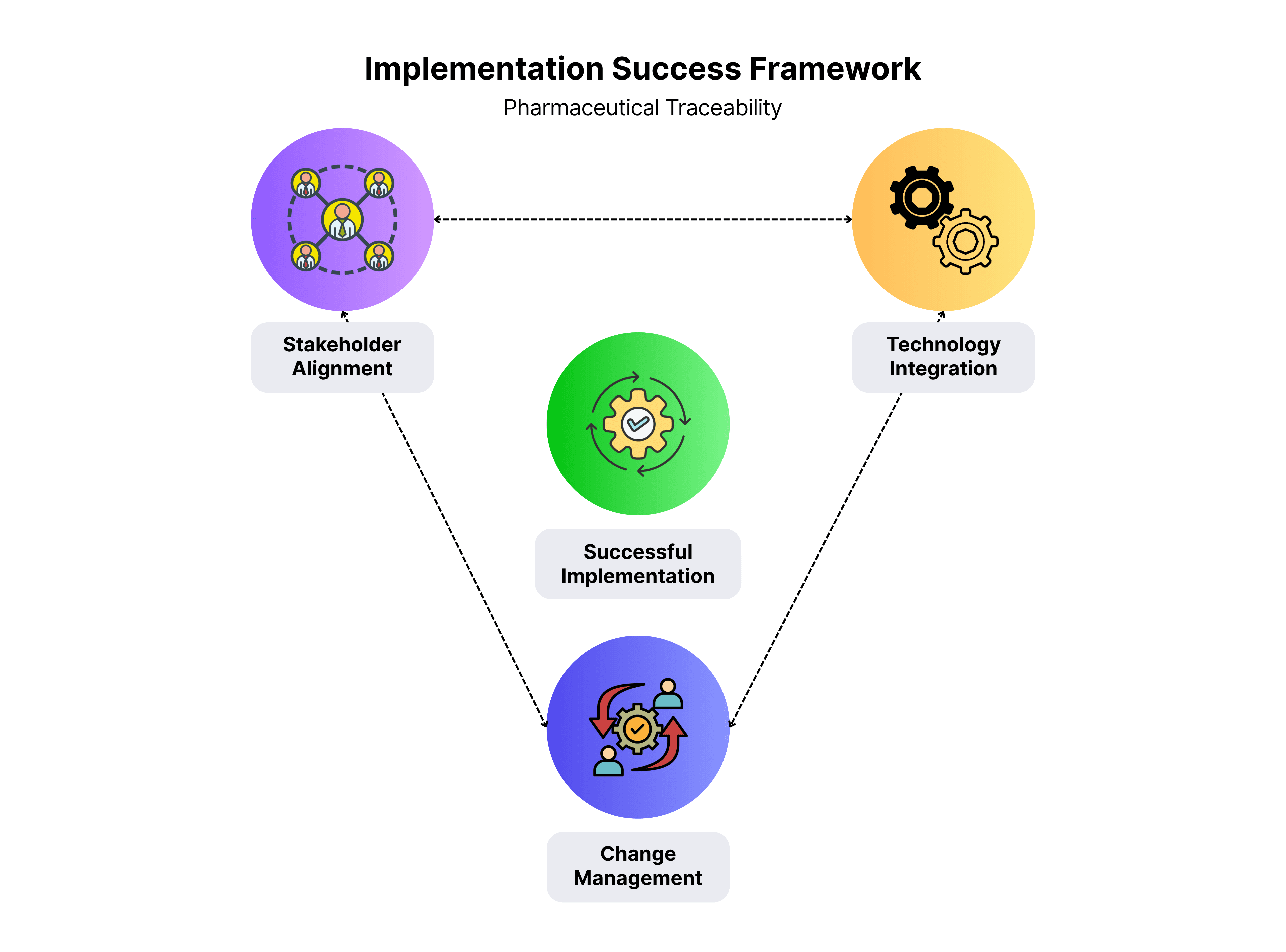
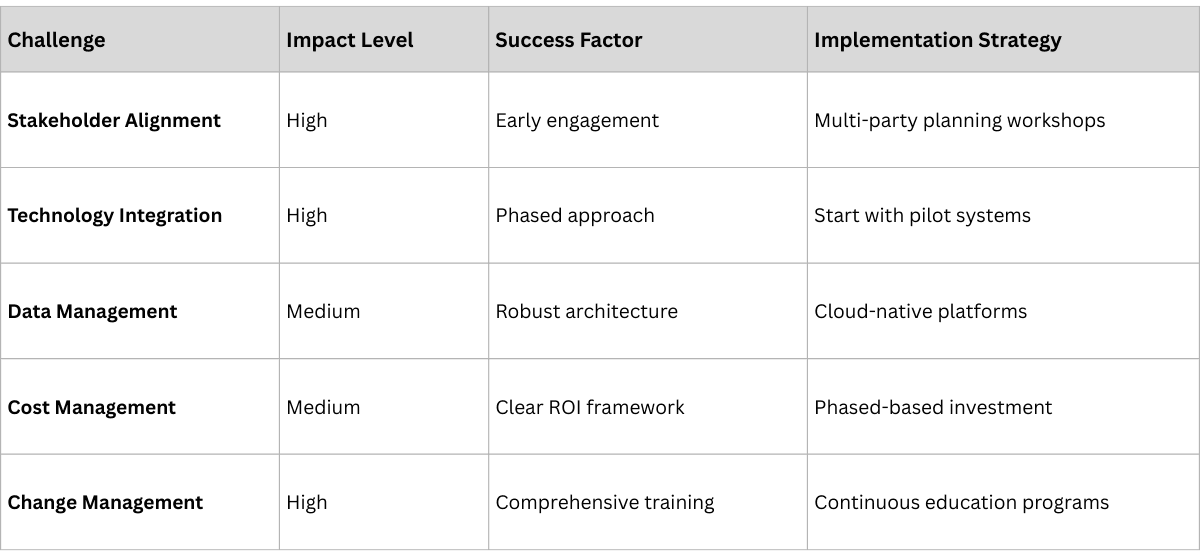
Several emerging technologies are enhancing pharmaceutical traceability capabilities and expanding potential applications:
Artificial Intelligence and Machine Learning: AI is enabling predictive analytics for demand forecasting, pattern recognition for fraud detection, and automated decision-making for supply chain optimization. Early adopters report significant improvements in demand prediction accuracy and inventory management.
Blockchain Integration: While still largely in pilot phases, blockchain promises immutable audit trails, enhanced trust frameworks for partner collaboration, and smart contracts for automated transactions. Several pharmaceutical companies are exploring blockchain for critical product authentication.
Internet of Things (IoT): IoT sensors enable environmental monitoring throughout the supply chain, real-time condition tracking for temperature-sensitive products, and automated data capture that reduces manual processes. This is particularly valuable for biologics and other sensitive medications.
Advanced Analytics Platforms: Modern analytics platforms can process massive data streams in real-time, provide geographic and demographic segmentation, enable competitive intelligence gathering, and optimize ROI across all business functions.
Based on current trends and our implementation experience, several developments will shape pharmaceutical traceability over the next decade:
Regulatory Evolution: Expect expanding mandates in emerging markets, harmonization of global standards, and increased focus on patient-level tracking.
Technology Maturation: AI and blockchain will move from pilots to production, IoT integration will become standard, and platforms will become increasingly sophisticated.
Business Model Innovation: Companies will increasingly view traceability as a platform for competitive advantage rather than just compliance, new revenue streams will emerge from traceability capabilities, and service-based models will expand.
Global Standardization: International cooperation will increase, technology platforms will become more interoperable, and best practices will spread more rapidly across markets.
The global state of pharmaceutical traceability reveals an industry in transition. While regulatory compliance has driven initial adoption, leading companies are discovering that traceability offers far more than regulatory checkbox completion.
The pharmaceutical companies that recognize traceability as a strategic capability—not just a compliance requirement—will be better positioned to compete in an increasingly complex global market. They'll have superior operational intelligence, deeper customer relationships, and new revenue opportunities that competitors struggle to replicate.
As the global pharmaceutical industry continues to evolve, traceability will increasingly separate market leaders from followers. The question isn't whether to implement traceability—regulatory requirements have made that decision. The question is whether to implement it strategically or merely tactically.
The foundation is being laid today for the pharmaceutical supply chains of tomorrow. Companies that understand this reality and act accordingly will shape the future of pharmaceutical traceability—and capture the competitive advantages that come with it.
Next Week: The Executive's Implementation Guide to Complete Traceability - Learn the proven strategies and avoid the common pitfalls that derail pharmaceutical traceability projects.
About This Series
This blog post is part of "The Complete Guide to Pharmaceutical Traceability" series, drawing from our experience implementing traceability solutions across multinational pharmaceutical companies in India, Europe, and North America. Each post builds on real-world insights from deployments serving millions of patients and processing billions of pharmaceutical transactions.
Upcoming in This Series:
- Blog 2: The Executive's Implementation Guide to Complete Traceabilit
- Blog 3: How Traceability Transforms Pharma Business Models
- White Paper: Beyond Track and Trace - Strategic Business Model Transformation
For specific questions about traceability requirements in your market or to discuss implementation strategies, feel free to reach out to our team at connect@zelthy.com.
- World Health Organization. "Substandard and Falsified Medical Products." WHO Fact Sheet, November 2022.
- United Nations Office on Drugs and Crime. "Trafficking in Medical Products in the Sahel." 2022.
- U.S. Food and Drug Administration. "Drug Supply Chain Security Act (DSCSA) Implementation." FDA Guidelines, Updated 2023.
- European Medicines Agency. "Falsified Medicines Directive - Implementation Guidelines." EMA Report, 2022.
- IMARC Group. "Track and Trace Solutions Market: Global Industry Trends, Share, Size, Growth, Opportunity and Forecast 2024-2033." Market Research Report, 2024.
- GS1 Global. "GS1 Healthcare Implementation Guidelines." Standards Documentation, 2023.
- National Library of Medicine. “Fighting the global counterfeit medicines challenge: A consumer-facing communication strategy in the US is an imperative.” 2022.
- Strategy&, PwC. “Fighting counterfeit pharmaceuticals: New defenses for an underestimated - and growing - menace.” 2017.
- Pharmaceutical Security Institute. "Counterfeit Incident Trends Report 2023." PSI Annual Report, 2024.
- Altunkan, Serap & Yasemin, Alper & Aykac, Ismail & Akpinar, Elgin. (2012). Turkish pharmaceuticals track & trace system. 24-30. DOI: 10.1109/HIBIT.2012.6209037
- Indian Ministry of Health and Family Welfare. "Central Drugs Standard Control Organization Guidelines for QR Coding." Government Guidelines, 2023.
- USAID. “Implementation Guidance for Pharmaceutical Traceability Leveraging GS1 Global Standards.” 2019.
- Prophecy Market Insights. "Global Pharmaceutical Anti-Counterfeiting Technologies Market Overview." 2024.
- World Health Organizations Atlas of African health statistics. Universal health coverage and the sustainable development goals in the WHO african region. 2018.
- Pharmaceutical Commerce. “DSCSA Compliance: The Time is Now." 2025.
- National Library of Medicine. “Tackling Counterfeit Drugs: The Challenges and Possibilities." 2023.
- International Bar Association. “Counterfeit Pharmaceuticals: Innovative Strategies for Combatting Global Health Threats." 2025.
- National Library of Medicine. “Falsified and substandard medicines trafficking: A wakeup call for the African continent." 2022.














